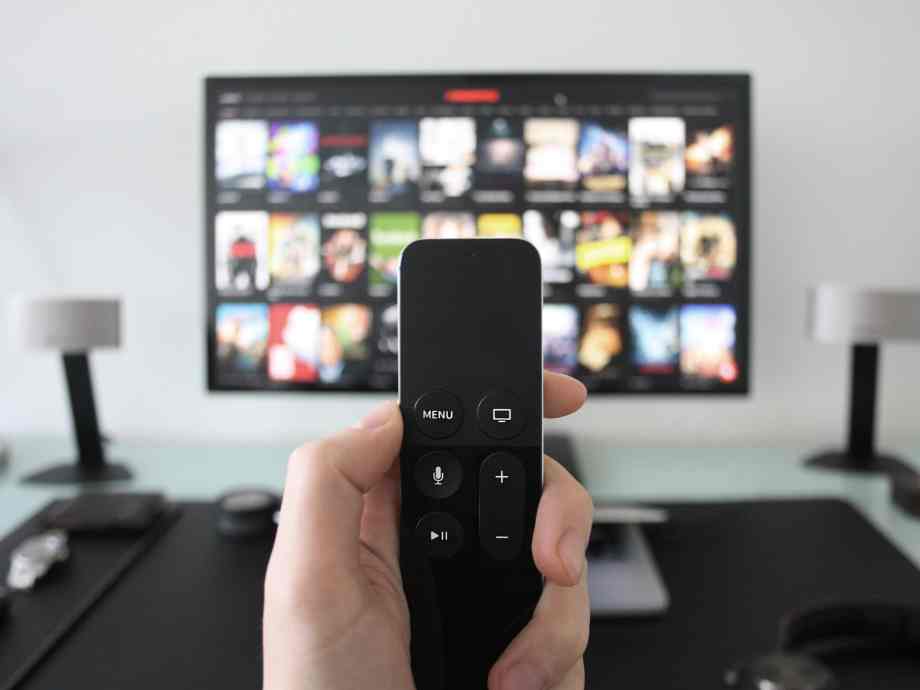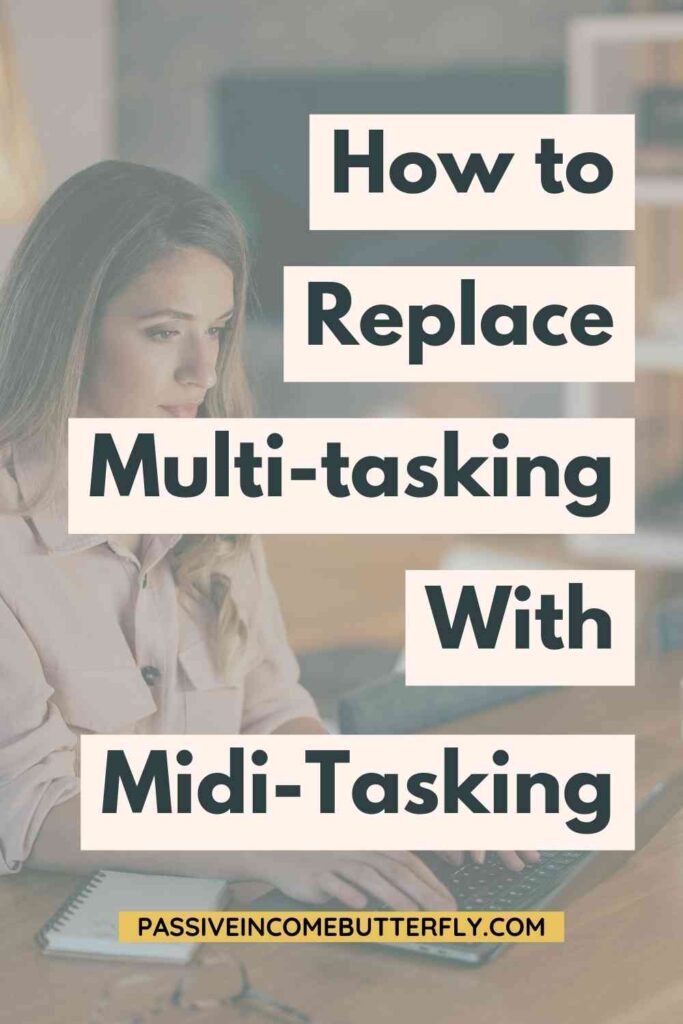I’ve got bad news for us multi-taskers: it turns out it doesn’t work.
At least, not as well as we wish it did.
Science tells us that our brains can only focus on one thing at a time, so when we multitask, what we’re really doing is switching back and forth between the two different tasks.
Studies have pretty clearly shown that when we’re quicking switching back and forth, our performance suffers, and we complete tasks more slowly and more poorly than we would’ve done them if we had just focused on one thing at a time.
So, if you want optimum efficiency, just do one thing at a time.
But…
We’re human, not machines. We don’t need to shoot for 100% efficiency in everything we do (nor should we, it’s just not healthy).
There are some times when trying to focus on just one thing can feel pretty darn impossible, especially if we have a lot of resistance to doing that thing.
When there’s a task that we really don’t want to do, whether it be writing that essay for school or organizing that huge pile of junk in the closet or (let’s be honest) just doing our regular job, I think it’s okay to do a little multi-tasking.
I’ve had my share of days when the only way I could make myself chip away at my workload was by putting on a TV show in the background.
Did this make me work slower and decrease my performance? Of course!
But if I hadn’t allowed myself to watch TV in the background, I might not have gotten started on anything at all.

Done is better than perfect, and doing imperfectly is better than procrastinating doing the thing because I just can’t deal today ahhh I can’t make myself do it.
In case you need to hear this, you have permission to multi-task. You’ll probably notice that it makes you work slower or whatever, but if it helps to make the job more fun or manageable, it has its place.
That being said…
If you’ve gotten to the point where you really want to multi-task but are trying to ensure your efficiency and work performance doesn’t completely suffer, try midi-tasking.
What is Midi-Tasking?
Midi-tasking is a term I just made up. 🙂 It means that instead of paying attention to multiple things at once, you… only sort of pay attention to multiple things at once.
Instead of having two tasks you’re focusing on 50-50 (or even 60-40), it’s more like… 90-10.
You have your main task, then a pleasant secondary activity – a background buzz – that makes the work more enjoyable, but doesn’t require significant brainpower to pay attention to.
For example…
Instead of listening to a podcast while you work on your blog articles, play some calming instrumental music instead.
Instead of watching Project Runway while you go through your expenses, you could turn on an ambience video on YouTube.
Instead of chatting with a friend while you design a graphic for your business’s website, try just sitting next to a friend who’s also working and checking in every once in a while.

What makes a good secondary activity while midi-tasking?
For midi-tasking, make sure the background “task” isn’t something that is too interesting or important. The newest episode of your favorite TV show… probably not a good fit.
Here are some ideas:
- Instrumental or classical music (music with lyrics may be too distracting)
- Sound effects of nature (running water, birds chirping, etc.)
- An ambience video. There are all sorts of these on YouTube, with scenery and sounds for every season and aesthetic. (Here’s a Day at Hogwarts one and here’s a Cozy Autumn Coffee Shop one.)
- A walking video. Like this one of walking around an English village.
- A TV channel on mute that doesn’t interest you that much – sports, news, home decor, etc. (Be honest with yourself. Don’t put on a basketball game if you actually care about basketball.)
- A physical location, like working outside where you can watch the birds, or at a coffee shop where you can watch people.
Why is midi-tasking useful?
Allowing yourself to experience a “pleasant secondary activity” (I like that phrase, I’m sticking with it) can help you to get started on that task you’ve been avoiding.
Pressing play on that Classical Music Spotify playlist can cue your mind that it’s time to start working, and it won’t be so bad because see, there’s some nice music playing.
The secondary activity can also act as your default distraction break (because let’s be honest, your mind will push you towards distraction), instead of an activity that is more likely to suck up your time and really distract you.
For example, you’re making a lesson plan for your online students and your brain says, “Let’s take a 20-second break. Let’s look on Facebook.” Needy little brain, it loves breaks.
If your brain pushes you to take a break, it’s probably because it needs one – but don’t let it convince you to open a new tab and check FB.
Instead, give yourself permission to focus on that background activity for a minute or two. If you’re listening to instrumental music, close your eyes and enjoy the way the cello interacts with the piano. If you’ve got an ambience video on, stare at it for a while and take some deep breaths.
Let that be the distraction you allow yourself. Since you’ve already chosen that as your go-to “break,” you don’t need to even entertain the idea of picking up your phone and scrolling Reddit.
When should I midi-task?
Try midi-tasking when you’re feeling a lot of resistance to starting a task. It can help you get into the groove and conquer the hardest part of any task: beginning.
You may also find midi-tasking useful if you find yourself in mid-afternoon slump and want to bring some variety into your day, especially if you’ve mostly been sitting in silence.
Feel free to turn off or stop the background activity at any time if you feel like it’s not serving you. Oftentimes, if you slip into a state of flow in your work, you won’t even notice the secondary buzz going on around you anyway. But if you feel like it’s starting to pull your mind in a way that you don’t like, turn off the TV or music or whatever you need to do.
Conclusion
True, you won’t be as “productive” if you multi-task OR if you midi-task.
But the truth is, you’re never going to run on 100% efficiency all day anyway. Your wonderfully human brain will be working in the background, giving you distractions to think about.
Because it doesn’t feel good to not have any control over your ability to resist distractions, we work on it. We learn how to be more productive.
But we’re okay with working imperfectly sometimes.
We’re okay with less than 100% efficiency if it means that a task gets done (or a serious dent gets made in it).
So, if you think midi-tasking might help you, give it a try!
Best of luck!

Before You Go…
If you’re having a hard time tackling your to-do list for the day, here are some gentle productivity tips to get started.






